1. Tips and tricks
1.1. interview techniques.pdf
1.2. Use silence
1.3. Use your experience to connect, but be brief
1.4. Repeat back, summarize, but check...
1.4.1. is that the case?
1.4.2. Have I understood you right?
1.5. know your audio recorder well
1.5.1. Power and backup batteries
1.5.2. Interruptions
1.5.3. Range
1.5.4. Background noise
1.5.5. Backup plan
2. Post-interview tasks
2.1. jot down observations reflections
2.2. Consolidate field notes, jottings from multiple people if needed
2.3. Re-read your field notes
2.4. Use MS Word commenting to add codes and comments
2.4.1. GOOD QUOTES
2.4.2. SURPRISES
2.5. Maintain a master code list
2.5.1. google doc
2.6. Write a pre-amble paragraph to summarize
2.6.1. What surprised you? Why?
2.6.2. What material is most likely to be useful in telling the story?
2.7. Transcribe the good parts (or the whole thing if you have time/money
3. Writing memos
3.1. Synthesize across interviews
3.2. focus a theme
3.3. Write snippets of the story that could be used in the case
4. Staying organized
4.1. Kinds of documents
4.1.1. Research design / overview
4.1.2. Interview spreadsheet / checklist
4.1.2.1. Scheduling
4.1.2.2. Tasks
4.1.2.3. Notes
4.1.3. Protocols
4.1.4. Field notes
4.1.5. Audio recordings
4.1.6. Transcripts
4.1.7. Memos
4.1.8. Outlines
4.1.9. Drafts
4.2. Tips
4.2.1. 20100223 docname v1 = convention for raw material and memos
4.2.2. Docname v1 = convention for revisables
4.2.3. Use platform with good free text search
4.2.3.1. Mac Spotlight
4.2.3.2. Google Desktop
4.2.3.3. Google Docs
4.2.4. Google Docs for shared stuff, particularly spreadsheets
4.2.5. File repository, e.g. Stellar or Athena locker
5. Writing
5.1. Coherence across writers
5.1.1. checking in and memo writing together
5.1.2. primary and secondary writers for each section
5.1.3. one person as coherence role
5.1.4. everyone read final draft
6. Inquiry cycle
6.1. What I think I know
6.2. I need to understand
6.3. My theory
6.4. New information
6.5. IT'S COLLECTIVE, SO MAKE IT VISIBLE
7. Research design
7.1. Images
7.1.1. Your preconceptions
7.1.1.1. What do you think you know?
7.1.1.2. What do you think you are going to learn?
7.1.2. What is this an example of?
7.2. Audiences
7.2.1. Their preconceptions
7.2.2. How will they read and use the narrative?
7.2.3. What will they learn?
7.3. Research questions
7.3.1. What do I need to understand?
7.4. Data
7.4.1. What data would I need to answer my questions?
7.4.2. What can I learn WITHOUT having to talk to the person?
7.4.2.1. From the internet
7.4.2.2. From email exchange
7.4.2.3. From a survey
7.4.2.4. MAKE EFFECTIVE USE OF PEOPLE'S TIME
7.4.3. Whom do I need to interview?
7.4.4. What do i need to learn from each interview?
7.5. Interview protocol design
7.5.1. General template
7.5.2. Customize for each interviewee
7.6. Analysis strategy
7.6.1. How to get from raw data to coherent story?
8. What is an interview?
8.1. Co-producing a text that you can analyze
8.1.1. Your interview questions are not (necessarily) your research questions
8.2. Building a relationship in which both can potentially learn
8.2.1. Gathering explicit knowledge
8.2.2. Making the tacit explicit
8.3. A guided conversation
8.3.1. Open ended questions
8.3.1.1. Invite story telling
8.3.2. Questions and probes
9. Container building
9.1. How and by whom you get introduced
9.2. Physical setting
9.3. Who else is present
9.4. Introducing yourself
9.4.1. What you are interested in, as generally as possible
9.4.1.1. NOT your hypotheses or your story, don't bias it
9.4.2. Agree on time boundaries
9.4.2.1. BE REALISTIC
9.4.3. Label yourself as students
9.4.4. Talk about your institutional context
9.5. Roles in the interview
9.5.1. questioner
9.5.2. note taker
9.5.3. observer
9.5.4. quant data gatherer
9.5.5. translator
9.5.5.1. what's their process
9.5.5.2. get them in the container before
9.5.5.3. debrief after
9.5.6. BE CLEAR IN ADVANCE
9.6. Setting ground rules
9.6.1. Notes / audio recording
9.6.2. Voluntary
9.6.3. Confidentiality
9.6.4. Quote check procedure
9.6.5. Writing check procedure
9.7. Giving them a chance to ask questions
10. Phases of an interview
10.1. Background stories
10.1.1. Where are you from?
10.1.2. How did you come to be here (in this place, in this role)?
10.2. Learn about their world
10.2.1. What does a day in the life of _____ look like?
10.2.2. What are your most pressing challenges? What keeps you up at night?
10.2.3. How does your work and experience compare to ______?
10.3. Connect their world to your topic
10.3.1. Story of how you got involved
10.3.2. How are things going?
10.4. Invite them to think aloud
10.4.1. What do you want to have happen?
10.4.2. What are the biggest challenges ahead?
10.4.3. If I came back x months/years from now, what do you think I would see?
10.5. Anything else you've thought of as we've been talking?
10.5.1. Others I should talk to?
10.5.2. Things I should look into or learn about?
10.6. Closing well
10.6.1. Close the notebook, and keep listening
10.6.2. Thank them profusely
10.6.3. Make sure they can contact you
10.6.4. Reconfirm your commitments about follow-up / checking
11. Why research methods?
11.1. Social systems are not just physical systems
11.1.1. People make meaning
11.1.2. They do it together
11.1.3. They make meaning of your research!
11.1.4. NOTE: Response bias, motivated reasoning
11.2. There are only so many words
11.2.1. Folk and social science concepts overlap
11.2.2. NOTE: Operationalization, ambiguity
11.3. All science infused with ethics, social is obvious
11.3.1. Decisions affect people's lives
11.3.2. Gathering data makes people vulnerable
11.3.3. BE TRANSPARENT NOT OBJECTIVE
11.3.4. BE COLLABORATIVE, including informants

